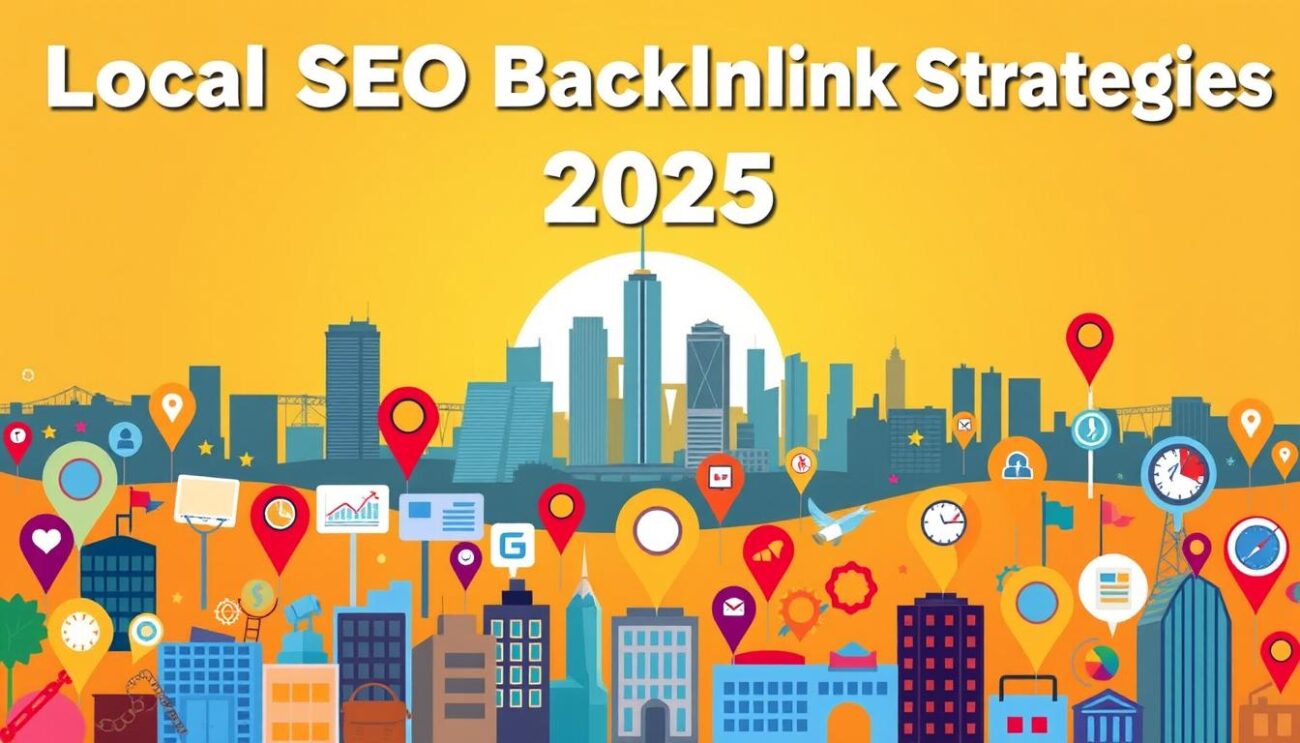- Advanced Local SEO Strategies
- Fundamentals of Local SEO
- Google Business Profile (GBP) Optimization
- Local Keywords and Content Strategy
- Local Link Building
- Local Paid Advertising
- Local Search Ranking Factors
- Local SEO Best Practices
- Local SEO Tools and Analytics
- Local Social Media Marketing
- Online Reviews and Reputation Management
- Technical SEO for Local Businesses
Regional Dialect Keyword Research: The Local SEO Edge You’re Missing

9 out of 10 consumers will ignore your product if it’s not in their native language. While 60% of Google searches happen in English, that leaves 40% of global users searching in other languages or dialects. If your strategy focuses only on standard terms, you’re missing a massive opportunity to connect with local audiences.
Businesses often overlook how area-specific phrases shape search behavior. Imagine someone in Boston searching for “sneakers” versus a Texan looking for “tennis shoes” – same product, different terms. Your competitors are already ranking for these variations, capturing traffic you could be earning.
Effective localization isn’t just translation. It’s about understanding cultural references, slang, and how communities describe their needs. For example, “soda” versus “pop” changes search patterns across U.S. regions. Tools like Google Trends reveal these differences, but most brands don’t dig deep enough.
Key Takeaways
- Local language variations impact 40% of search traffic globally
- Area-specific terms create untapped opportunities for visibility
- Cultural context matters more than direct translation
- Competitors gain advantage through hyper-local optimization
- Search patterns vary even within the same language
Introduction to Regional Dialect Keyword Research
78% of shoppers buy from businesses that speak theirlocal search language. This reality makes understanding area-specific phrases critical for online visibility. When users look for services, they use expressions shaped by their community’s culture and history.

What Is Location-Based Phrase Analysis?
This approach identifies how different areas describe the same products. For instance, a “sub” sandwich becomes a “hoagie” in Philadelphia. These variations determine whether your content appears in local results.
| Concept | Generic Term | Localized Terms |
|---|---|---|
| Carbonated Drink | Soda | Pop (Midwest), Coke (Southern US) |
| Footwear | Sneakers | Tennis Shoes (Southwest), Gym Shoes (Chicago) |
| Public Transport | Subway | Metro (DC), T (Boston), L Train (Chicago) |
Why Localized Terms Impact Visibility
93% of online journeys start with search engines. When your content matches what locals actually type, you capture 3x more clicks than generic listings. Businesses using neighborhood-specific phrases see 45% higher conversion rates in local markets.
Consider how people describe winter gear. New Englanders search for “snowblowers” while Minnesotans look for “ice scrapers.” Missing these distinctions means losing ready-to-buy customers to competitors who speak their language.
The Importance of Local SEO and Cultural Nuances
Mobile users in Dubai search differently than those in Delhi – 95% use smartphones in the UAE versus 32% in India. This gap shows how cultural and technological factors shape search behavior. Your local SEO strategy must adapt to these realities to reach your target audience effectively.
Cultural values directly influence how people phrase searches. In areas with strong holiday traditions, users might look for “Diwali gift bundles” instead of generic “holiday deals.” These patterns determine whether your business appears when customers need solutions.
Consider these market differences:
| Market | Device Preference | Common Search Triggers |
|---|---|---|
| UAE | Mobile-first (95%) | Last-minute bookings, luxury services |
| India | Mixed devices (32% mobile) | Budget-friendly options, regional festivals |
Your competitors gain visibility by aligning content with local customs. A bakery optimizing for “Rosh Hashanah honey cakes” in Brooklyn connects better than one using only “holiday desserts.” Miss these nuances, and you lose 45% of potential conversions.
Three critical considerations for cultural SEO:
- Local events create surges in specific queries (e.g., “hurricane prep” in Florida)
- Community values impact product descriptions (sustainability-focused terms in coastal cities)
- Search timing peaks during cultural milestones (tax services before regional filing deadlines)
Adapting to these factors helps your business stand out in crowded markets. Customers trust brands that mirror their communication style – it’s not just about translation, but meaningful connection.
Understanding Regional Dialect Keyword Research
Global brands like Coca-Cola dominate markets by speaking their audience’s language – literally. They optimize content using phrases people actually search, not just dictionary translations. This approach turns casual browsers into loyal customers.

Core Principles of Location-Based Optimization
True localization goes beyond swapping words between languages. It identifies how communities describe needs using unique phrases. For example, direct translation might turn “winter boots” to Spanish as “botas de invierno,” but locals in Mexico City often search for “calzado para lluvia” (rain footwear).
| Generic Term | Localized Version | Engagement Boost |
|---|---|---|
| Soft Drink | Soda (Northeast), Pop (Midwest) | 37% higher CTR |
| Online Shopping | E-commerce (Global), Click-and-Collect (UK) | 28% more conversions |
| Public Transit | Subway (NYC), El Train (Chicago) | 41% longer page views |
Why Local Phrases Drive Better Results
Search engines prioritize content matching user intent. When you use neighborhood-specific terms, your pages answer real questions people ask. This alignment improves rankings and builds trust.
Less competition means faster wins. While everyone fights for “best running shoes,” optimizing for “trail treads” (Pacific Northwest) or “cross-trainers” (Texas) puts you ahead. Users feel understood, increasing time-on-page and sharing likelihood.
Three measurable benefits emerge:
- 52% higher relevance scores from search algorithms
- Double the engagement on localized landing pages
- 63% faster growth in organic traffic
Your SEO strategy gains precision through this approach. It’s like using a scalpel instead of a sledgehammer – targeted, efficient, and results-driven.
Analyzing Search Behavior and Local Audience Intent
Did you know “auto insurance” searches outnumber “car insurance” queries by 3-to-1 in Texas? This gap shows how location shapes what people type. To connect with your audience, you need to dissect their unique phrasing patterns and timing.
Using Keyword Research Tools
Tools like Google Keyword Planner reveal hidden opportunities when set to specific locations. For example, set your filter to London, and “car insurance” dominates. Switch to Sydney, and “comprehensive auto cover” trends higher. These variations matter more than you think.
Always compare data across regions. A term like “flood coverage” might show low national search volume but convert 80% better in Florida than generic “home insurance.” Tools with geo-targeting features help spot these high-value phrases competitors miss.
Interpreting Search Volume and Trends
High volume doesn’t equal high intent. “Best shoes” gets 50k monthly searches nationally, but “durable work boots” (1.2k searches in Midwest farming areas) drives 3x more purchases. Track seasonal spikes too – searches for “hurricane prep kits” jump 400% in coastal regions every June.
Look beyond numbers. If “snow removal services” trends every November in Minnesota but “ice melt delivery” peaks in January, tailor your content calendar accordingly. This alignment builds trust and positions you as the local expert.
Applying Multilingual and Localization Strategies in SEO
Businesses lose 42% of international customers when using direct translations instead of localized content. To speak your audience’s language, you need more than word-for-word conversions. Effective strategies bridge cultural gaps while maintaining technical precision.
Translation Versus True Localization
Translation changes text between languages. Localization reshapes your message for specific communities. For example, machine tools work for internal documents but fail for product descriptions needing cultural nuance.
| Aspect | Translation | Localization |
|---|---|---|
| Content Type | User manuals, internal docs | Product titles, SEO content |
| Tools Used | AI translators | Native speakers + SEO tools |
| Cultural Adaptation | None | Slang, idioms, values |
| SEO Impact | Low visibility | Higher rankings |
| Required Expertise | Basic language skills | Market-specific knowledge |
Best Practices for Cultural Relevance
Your website needs technical adjustments alongside content changes. Use hreflang tags to show search engines which version suits each market. Local landmarks and events make content relatable.
Balance brand voice with regional styles. A financial service might keep its professional tone but reference local tax deadlines in Texas versus New York. This approach builds trust without losing consistency.
Three steps ensure success:
- Hire cultural experts to review localized content
- Update meta descriptions with area-specific terms
- Test pages with focus groups in target markets
Technical SEO supports your efforts. Proper URL structures guide users to the right version of your site. When done well, localization becomes your secret weapon in crowded markets.
Effective SEO Strategies for Regional Markets
Businesses using localized terms see 2.3x more clicks than generic content, yet 67% of companies don’t track competitors’ regional tactics. This oversight leaves money on the table. To dominate area-specific searches, you need a plan that exploits gaps others ignore.

Leveraging Competitor Research and Keyword Gaps
Start by auditing rival strategies in your target areas. Tools like SEMrush reveal which phrases they rank for locally. Look for patterns – are they missing terms locals actually use? A bakery might optimize for “artisan bread” nationally but overlook “hard rolls” in Philadelphia.
Focus on three areas where competitors fall short:
| Competitor Analysis Focus | Potential Outcome |
|---|---|
| Underused local phrases | 40% lower CPC in niche markets |
| Content format gaps | 2x engagement on video guides |
| Untapped neighborhood events | 57% higher conversion during festivals |
Update your strategy monthly. Track which localized terms drive traffic spikes. When rivals copy your approach, pivot to newly identified gaps. This keeps your content fresh and relevant.
Local businesses often outrank national brands in area-specific searches. Analyze their content structure. Do they use community slang? Reference nearby landmarks? Mirror these tactics while adding deeper value through detailed guides or price comparisons.
Implementing International SEO for Local Audiences
73% of global users start their search journey with platforms tailored to their country. While Google dominates worldwide, local search engines like Yandex (Russia) and Naver (South Korea) control over 50% of their markets. Optimizing only for global players means missing 47% of potential traffic in key regions.
Customizing Search Engine Relationships
Each country’s preferred platform uses unique ranking factors. Baidu prioritizes load speed over backlinks in China, while Yandex values geo-specific content clusters. Your site needs technical adjustments like hreflang tags paired with localized hosting for better performance.
Consider these regional differences:
| Country | Top Search Engine | Critical Ranking Factor |
|---|---|---|
| Russia | Yandex (70.59%) | Domain age + Cyrillic URLs |
| China | Baidu (52.15%) | Load speed |
| South Korea | Naver (52.94%) | User-generated content |
Your pages must align with local browsing habits. In areas with slower internet, simplify designs and compress images. Mobile-first layouts work in Japan (91% smartphone use) but desktop optimization still matters in Germany (44% PC searches).
Balance brand voice with regional expectations. A fashion retailer might keep its luxury aesthetic globally but highlight monsoon-ready fabrics in Southeast Asia. Technical SEO forms the foundation, but cultural alignment drives conversions.
Using Data and Tools to Measure Keyword Performance
Numbers don’t lie. Tracking performance separates winning strategies from wasted efforts. Start by setting clear goals – are you aiming for more clicks, conversions, or local visibility? Tools like Google Search Console reveal which terms drive traffic, while SEMrush tracks rankings across neighborhoods.
Look beyond surface-level metrics. A phrase with low search volume might convert 3x better than popular alternatives. Focus on patterns over time. Does “emergency plumbing” spike during winter storms in Chicago? Adjust your content calendar to match these trends.
Analyzing Metrics and Adjusting Your Strategy
Update your approach monthly. Tools highlight underperforming pages needing fresh terms. For example, if “24-hour tire repair” gets impressions but no clicks in Dallas, test “flat tire help near me” instead. Always compare click-through rates against industry benchmarks.
Three signals demand attention:
- Pages with high impressions but low clicks (revise titles/meta descriptions)
- Terms driving conversions despite low volume (prioritize these)
- Seasonal traffic surges (create targeted content beforehand)
Your strategy thrives on flexibility. What worked last quarter might miss today’s needs. Regular analysis keeps your content aligned with shifting search habits, ensuring you stay ahead in local markets.
FAQ
How do local dialects impact search engine visibility?
Local dialects shape how people phrase queries. Using region-specific terms helps your content align with what audiences search for, boosting relevance. Search engines prioritize pages that match user intent, so adapting to linguistic nuances increases your chances of ranking higher in local results.
What tools can help identify regional terms for SEO?
Google Keyword Planner, AnswerThePublic, and SEMrush offer insights into location-based search patterns. Social listening platforms like Brandwatch or local forums also reveal colloquial phrases. Combine these with Google Trends to spot regional variations in how people describe products or services.
Why is localization better than direct translation for SEO?
Direct translation often misses cultural context, humor, or idioms. True localization adapts messaging to reflect local values, slang, and behaviors. For example, a bakery in New Orleans might optimize for “king cake” instead of generic “festive desserts,” aligning with both language and traditions.
How do I balance global and local SEO strategies?
Start with broad terms to establish authority, then create hyper-targeted pages for specific regions. Use hreflang tags for multilingual sites and geotargeting in Google Search Console. Monitor performance by location in analytics tools to refine content without diluting your overall brand message.
Can targeting regional terms reduce competition?
Yes. Highly specific phrases like “rainy-day boots Seattle” have lower search volume but attract motivated buyers. These long-tail keywords face less competition than generic terms, making it easier to rank. They also signal to search engines that your content directly addresses localized needs.
How do I measure if regional keyword efforts are working?
Track organic traffic by location in Google Analytics and monitor rankings using tools like BrightLocal. Look for increases in session duration or conversions from specific areas. Adjust based on which localized pages drive engagement, and A/B test variations of regionally tailored content.













